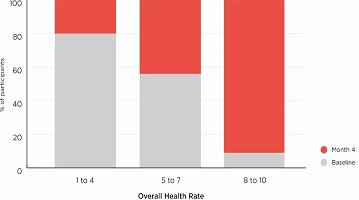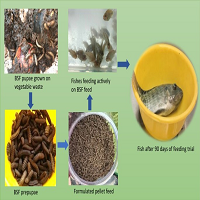1. Hu FB. Globalization of diabetes: The role of diet, lifestyle, and genes. Diabetes Care. 2011; 34(6): 1249-1257. doi: 10.2337/dc11-0442
2. Dabelea D, Mayer-Davis EJ, Saydah S, et al. Prevalence of type 1 and type 2 diabetes among children and adolescents from 2001 to 2009. JAMA. 2014; 311: 1778-1786. doi: 10.1001/jama.2014.3201
3. Ley SH, Ardisson Korat AV, Sun Q, et al. Contribution of the nurses’ health studies to uncovering risk factors for type 2 diabetes: Diet, lifestyle, biomarkers, and genetics. Am J Public Health. 2016; 106(9): 1624-1630. doi: 10.2105/AJPH.2016.303314
4. Fraser A. Long-term health outcomes in offspring born to women with diabetes in pregnancy. Curr Diab Rep. 2014; 14(5): 489- 492. doi: 10.1007/s11892-014-0489-x
5. Maffeis C, Moghetti P, Grezzani A, et al. Insulin resistance and the persistence of obesity from childhood into adulthood. J Clin Endocrinol Metab. 2002; 87(1): 71-76. Web site. http://www.ncbi.nlm.nih.gov/pubmed/11788625. Accessed September 18, 2016
6. Dutton GR, Lewis CE. The look AHEAD trial: Implications for lifestyle intervention in type 2 diabetes mellitus. Prog Cardiovasc Dis. 2015; 58(1): 69-75. doi: 10.1016/j.pcad.2015.04.002
7. Laws R, Counterweight Project T. A new evidence-based model for weight management in primary care: The counterweight programme. J Hum Nutr Diet. 2004; 17(3): 191-208. doi: 10.1111/j.1365-277X.2004.00517.x
8. Ludwig DS. Weight loss strategies for adolescents: A 14-year-old struggling to lose weight. JAMA. 2012; 307(5): 498-508. doi: 10.1001/jama.2011.2011
9. Sallinen BJ, Hassan F, Olszewski A, et al. Longer weekly sleep duration predicts greater 3-month BMI reduction among obese adolescents attending a clinical multidisciplinary weight management program. Obes Facts. 2013; 6(3): 239-246. doi: 10.1159/00035181
10. Lack LC, Wright HR. Chronobiology of sleep in humans. Cell Mol Life Sci. 2007; 64(10): 1205-1215. doi: 10.1007/s00018- 007-6531-2
11. Wolfson AR, Carskadon MA. Sleep schedules and daytime functioning in adolescents. Child Development. 1998; 69(4): 875- 887. doi: 10.1111/j.1467-8624.1998.tb06149.x
12. Bourgeois MK, Giannotti F, Cortesi F, Wolfson AR, Harsh J. The relationship between reported sleep quality and sleep hygiene in Italian and American adolescents. Pediatrics. 2005; 115(Suppl 1): 257-265. doi: 10.1542/peds.2004-0815H
13. Asarnow LD, McGlinchey E, Harvey AG. Evidence for a possible link between bedtime and change in body mass index. Sleep. 2015; 38(10): 1523-1527. doi: 10.5665/sleep.5038
14. Tan E, Healey D, Gray AR, et al. Sleep hygiene intervention for youth aged 10 to 18 years with problematic sleep: A before-after pilot study. BMC Pediatr. 2012; 12: 189. doi: 10.1186/1471-2431-12-189
15. Bei B, Byrne ML, Ivens C, et al. Pilot study of a mindfulness-based, multicomponent, in-school group sleep intervention in adolescent girls. Early Interv Psychiatry. 2013; 7(2): 213-220. doi: 10.1111/j.1751-7893.2012.00382.x
16. Dewald-Kaufmann JF, Oort FJ, Meijer AM. The effects of sleep extension on sleep and cognitive performance in adolescents with chronic sleep reduction: An experimental study. Sleep Med. 2013; 14(6): 510-517. doi: 10.1016/j.sleep.2013.01.012
17. Dewald-Kaufmann JF, Oort FJ, Meijer AM. The effects of sleep extension and sleep hygiene advice on sleep and depressive symptoms in adolescents: A randomized controlled trial. J Child Psychol Psychiatry. 2014; 55(3): 273-283. doi: 10.1111/jcpp.12157
18. Wing YK, Chan NY, Man Yu MW, et al. A school-based sleep education program for adolescents: A cluster randomized trial. Pediatrics. 2015; 135(3): e635-e643. doi: 10.1542/peds.2014-2419
19. Azevedo CVM, Sousa I, Paul K, et al. Teaching chronobiology and sleep habits in school and University. Mind, Brain, and Education. 2008; 2(1): 34-47. doi: 10.1111/j.1751-228X.2008.00027.x
20. Cain N, Gradisar M, Moseley L. A motivational school-based intervention for adolescent sleep problems. Sleep Med. 2011; 12(3): 246-251. doi: 10.1016/j.sleep.2010.06.008
21. Hart CN, Carskadon MA, Considine RV, et al. Changes in children’s sleep duration on food intake, weight, and leptin. Pediatrics. 2013; 132(6): e1473-e1480. doi: 10.1542/peds.2013-1274







